|
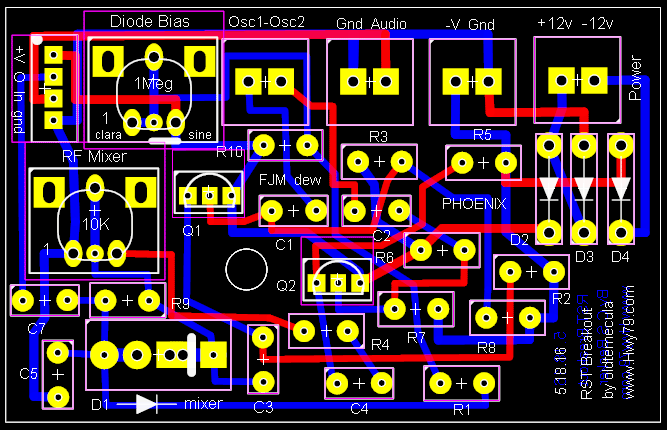
1.9"
x 3"
| Purchase
a finished EtherWave Standard board for
$96, add my $50
modification and you will have a theremin better in design & sound than Clara
Rockmore - That's
Priceless
-
Have the full range of classic theremin sound from beautiful flute
to Clara to violin -
|
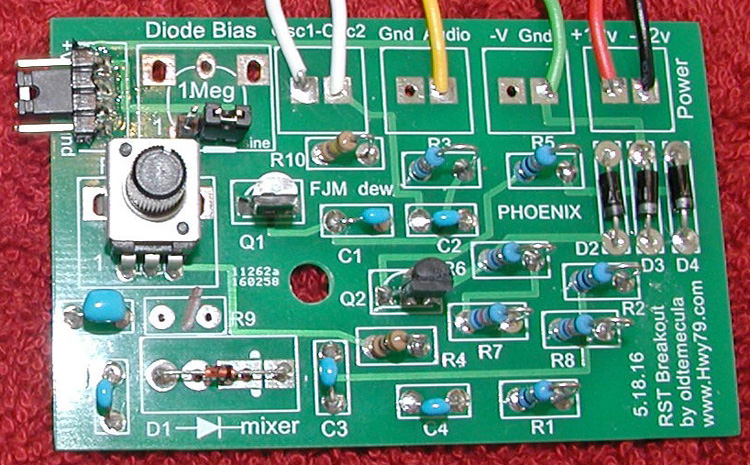
|
The Mixer Pot in
the image above controls the RF level/blend across the mixer diode,
along with the diode bias there is a sweet
spot I adjust to. Another board the Harmonic Exciter is where the real vocal
action happens.
The third harmonic attenuation begins at the mixer diode to get that classic theremin sound. At
the diode we have control over forward bias and RF mix.
The
theremin breakout board will
work with any two LC oscillators from 200 kHz to 1 MHz.
The
Harmonic Exciter board output
audio is line level. (adjustable)
View this EWS
Hot Rodding schematic.
|
|
Mouser Parts List at
Bottom of Webpage.
Updates:
8.05.16
I will order 10 of the second PCB seen below next week, it is time.
7.25.16
Due to lack of interest I am in pause mode.
5.17.16 The
Breakout PCB has been ordered. The Exciter board will come later.
5.11.15 Received
the Mouser parts and most of the others.
5.08.16 Someone ask how the
high pitch sound was, wish I could play tune Sample.wav
1 Meg
A lot of parts
on order, will order 10 of the first breakout PCB after I check out the
parts. Two
switches could be used, one for Mute if wanted, one for a pure sine wave
if needed for a sweet whistle.
5.06.16 I changed the potentiometer footprint to accommodate for
more than one pot style.
First set of parts were ordered
today from Mouser. |
This
second board is still developing
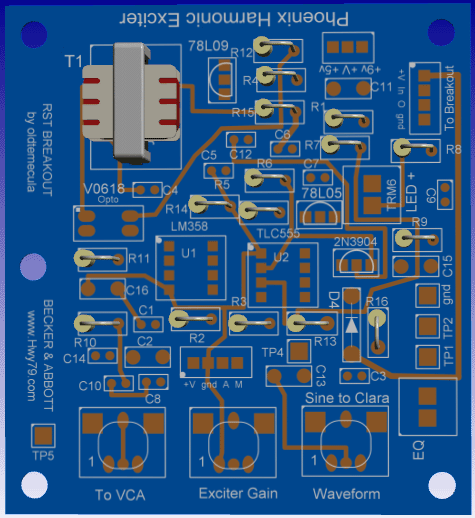
3.1" x 3.1" |
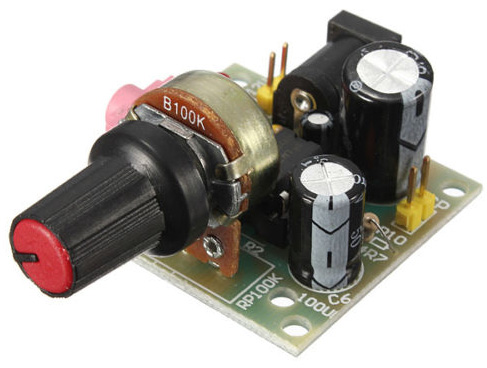
LM386 Pitch Preview
Amplifier Module |
| There is
a spot on the board for home built theremin's to use a CdS
photocell for a finger volume control in line to the main amplifier.
Try this if traditional volume control is unavailable. |
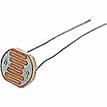 |
.
The Harmonic Exciter board on the left mounts on the wood shoulder by the volume control using a ribbon cable
plugged into my other internal EWS breakout board. There
are four test points and ground on the left graphic. TP1 is the signal
from the mixer diode, TP2 is a 3 volt audio signal sine
wave, TP3 is ground and TP4 is a 5v p-p square wave
from the 555 output in sync with TP2. TP5 is the final
polished line level audio wave shape. Another
ribbon cable can be brought outside the box to drive a pitch
preview LM386 ear bud
amplifier with its own volume
control knob, this also
has a LED power ON
indicator and a spot to mount a switch to Mute
the theremin. The black power jack can output a regulated 5
volts or 9
volts @ low current to
power something else like a pitch
tuner, use a Y connector
plugged into the pink 3.5 mm jack. The audio is pre-volume
control. This extra external $3 - LM386 feature board is a luxury
and not really necessary. On
the Standard the
EWS Waveform pot is removed and set aside in the box, my Waveform
pot will take its place. I
might even replace the Brightness pot with my Exciter Gain pot. Both
EWS pots remain intact and connected, just removed from the panel and place
securely aside inside the box. On
the EW Plus the Phoenix Exciter pots, which use a ribbon
cable, could be dropped outside the box without
drilling any holes
so they do not interfere with the Plus panel potentiometers. Note:
My Breakout board extends 1/2" (13mm) beyond the edge of the
EWS PCB, it may not fit in the space behind the EW
Plus custom
board. Someone needs to experiment. |
Find this
Harmonic Analysis freeware program Here
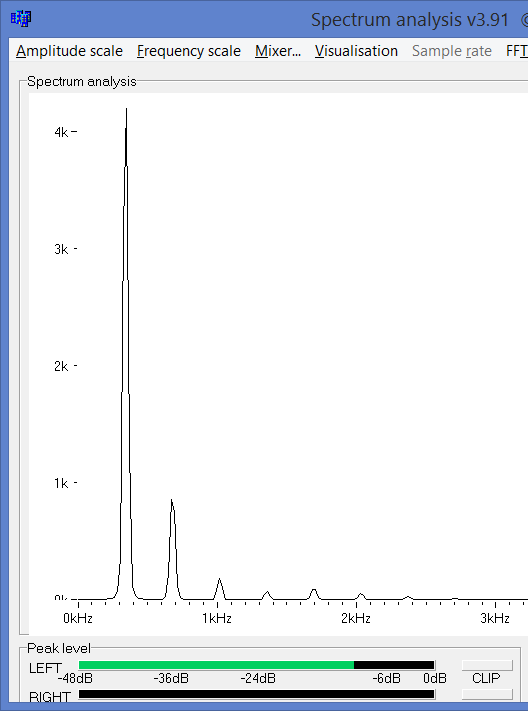 |
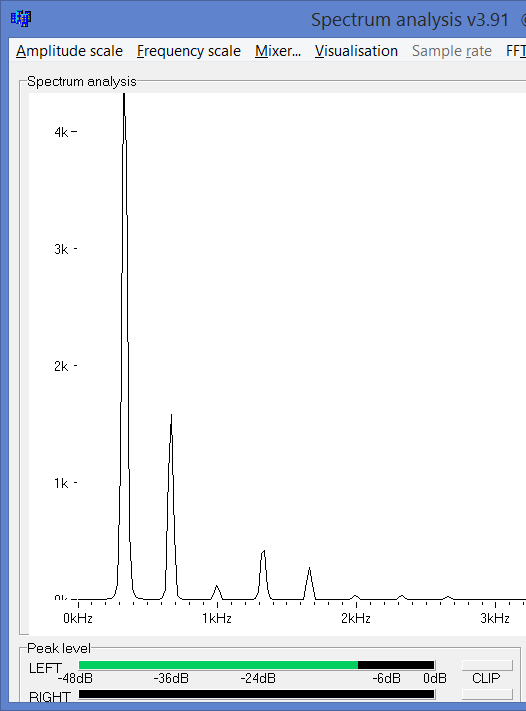 |
| Bypassing
the Harmonic Exciter - Off |
Exciter
On - This gives me the Clara sound I like |
.
The two displays are in this recorded sound byte, about halfway I
switch On the Harmonic Exciter (right
image), then OMG!
Switched
on Clara.wav
Theremin Direct
to Sound Card wav 3 megs
|
In the right
image the
third harmonic sits at 1-khz, this is the exact harmonic balance I
try to dial in.
Using a pot you can sweep the range from
a bland EWS to Hello Clara, how do engineers Model that in software?
|
Most diodes for mixing
seemed to work ok, the 1N914 worked the best for me. I like the germanium diode
1N34A but I can find no extra benefits. I tried a germanium 1N60 and it did not work as good for the 3rd harmonic issue. I tried an old germanium transistor base/collector and it worked outstanding.
Serendipity
I also tried a 1N4007, it sounded
a bit like Donald Duck singing. This breakout circuit board allows for a terminal to
be mounted in place of the mixer diode so you can experiment with
different diodes.
|
|
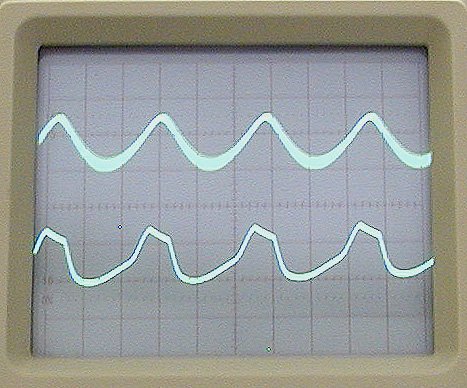
Clara wave
shape from the Mixer Diode
(top) to the Harmonic Exciter output
(bottom)
Top = 1-volt per
grid-line, Bottom = 2-volts per grid-line @ 400 Hz
Exciter output uses a
potentiometer
feeding back to the EWS
VCA
The key to
the authentic
sound of Lev Sergeyevich Termen is the lazy
bottom in the waveform. This is what generates the throaty
vocal sound. This is created by having a minimum bias through the RF
mixing diode. Full bias creates the ideal
sine wave.
The
skew on
top in the bottom wave shape develops by using
an audio transformer, this generates the even
harmonic overtones. |
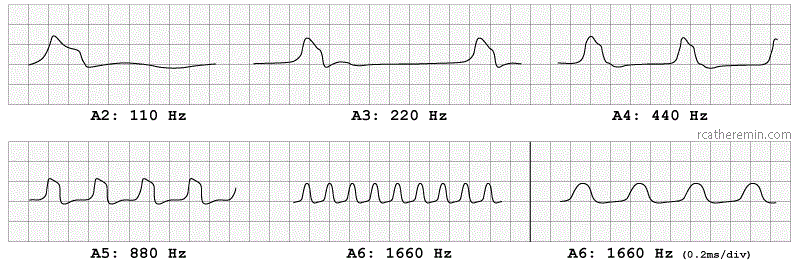
The above RCA
wave shapes are from master builder Andrew Baron's RCA
Registry webpage.
Read what he states creates a beautiful sound. Notice
the RCA 880 Hz wave shape against my 400 Hz, the RCA 220 Hz flat bottom
creates the buzz.
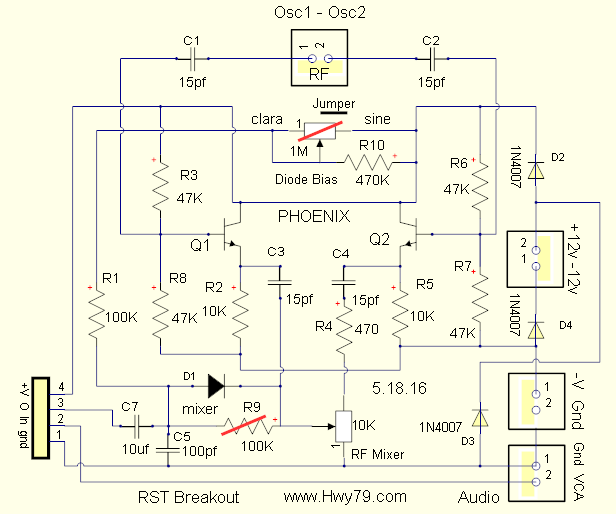
My sound bytes
reveal this schematic is more than engineer Modeling bluster.
Most theremin
builders want to build with substance not theory. I created this webpage because there is
just too much intellectual engineering gibberish going on and very little
demonstration of hands on practice. Feed two
Vacuum Tube RF Oscillator signals through this buffer and the spirits will
be channeled, I have done it.
Pull the C2-15
pf capacitor
on the EWS and connect a Osc wire to each pad. The variable pitch side
wire must connect to the Osc1, the diode side of the connection to Osc2 which is
also attached
to the fixed oscillator. View this EWS
Hot Rodding schematic. Note:
The PCB copper is like tissue paper, it may be better to split the C2 with
wire cutters and connect to the wire leads above board, keeping the hot
iron off the copper pads so they do not lift off the board.
R1-100K & R10-470K
instead of Pot 1M a simple switch or pin jumper can be used.
Open = Clara, when Closed = sweet sine wave.
gnd--jmp if jumped allows this buffer board to be used with other single supply
theremin design's.
gnd is a connection between +12v & -12v along with earth ground.
The bottom right side terminal is the audio straight from the Phoenix Harmonic Exciter board back to the EWS
VCA. This signal level is pot adjustable.
Diode D2 & D4 help prevent accidental reverse power connections.
Diode D3 replaces the diode removed from the back of the EWS board for the
Breakout installation.
Q1 & Q2 emitters are deliberately lean on current ~1 ma, for the lazy
wave shape, to me the sound is better.
This buffer board outputs an ideal sine wave whistle (.2v p-p) not using the plug-on Exciter Board and
by placing a pin jumper across the two center In-Out pins at the 4-pin
Buffer-Breakout strip.
The buffer board by itself is not the sound I am after.
Mouser Parts List:
Mouser
Parts List For Buffer & Exciter Boards $35
8.15.16 Parts are for both boards the Breakout & Harmonic Exciter (this
needs update) Supplied by oldtemecula, the PCB's, the cable between boards, the 2x .1" 4-pin
strip, 2x 8 pin dip socket, the 10K waveform pot which replaces the original
EWS pot and a LM386 finished pitch preview amplifier module. Added a
CdS cell to experiment with manual volume control at FV.
Валерий я не забыл тебя.
9.12.16
I have a handful of Harmonic Exciter project sets to give away to EWS owners
at no cost. This is experimental and your success is dependant upon your
skills to follow directions and soldering the tiny pads properly. Only
C2-15pf is removed from the EWS. If you can not get your build to work properly
simply
remove the build and tack the extra C2-15pf on the parts list back to
where it was and no one will ever know. If it does work.......WOW!
Your EtherWave Standard
could sound like
this.
Notice the Interesting
Harmonic Spread
My decision
on who gets this package is based upon your sharing a photo and description
of your past electronic accomplishments. I will create a new webpage with
more construction details if there is any interest in my research. This
is not a beginner build. Post your
interest in my Chat
Forum
|